Nom Wah Tea Parlor: 125 years old Dim Sum Gem in NYC’s Chinatown
"A Timeless Dim Sum Gem in NYC’s Chinatown"
(5) default ratingBy Food and Spot, June 23, 2025

Nom Wah Tea Parlor: A Timeless Dim Sum Gem in NYC’s Chinatown
Hidden on a quiet, crooked alleyway in the heart of Chinatown, Nom Wah Tea Parlor stands as a living testament to New York City’s enduring immigrant spirit and culinary evolution. Established in 1920, this historic dim sum spot on Doyers Street isn’t just one of the oldest Chinese restaurants in the city—it’s a cornerstone of culture, community, and tradition.

The Roots of Chinatown and the Birth of Doyers Street
To truly understand the charm of Nom Wah, it’s important to explore the story of Chinatown itself. After the completion of major infrastructure projects like the Manhattan Bridge (often mistaken as the DUMBO Bridge), Chinese laborers who had worked tirelessly in building the city’s railroads and bridges were left with little support and nowhere to go. Many settled in Lower Manhattan, forming what we now know as Chinatown.
Doyers Street, where Nom Wah resides, is famously known as “The Bloody Angle,” a curved alley that was once notorious for gang violence in the early 1900s. Its tight bend made it a strategic spot for ambushes. But fast forward to today, and this storied street has been transformed into one of the most photographed corners in the neighborhood—its cobbled pavement and red lanterns creating an old-world charm that draws locals and tourists alike.
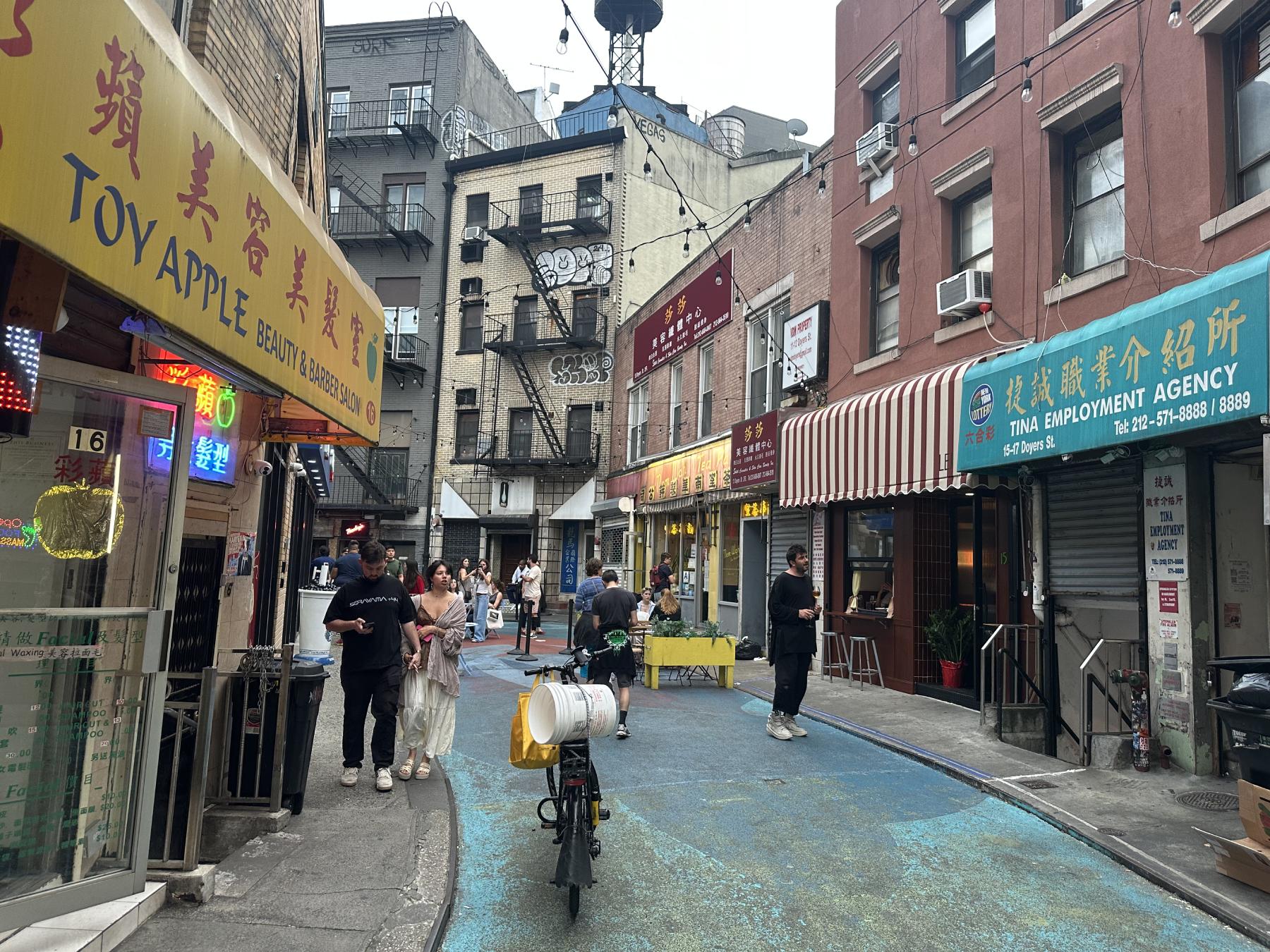
Nom Wah Tea Parlor: A Century of Dim Sum
Nom Wah opened its doors in 1920, first serving as a bakery and tea shop before becoming a full-fledged dim sum restaurant. Over the years, it has managed to evolve while maintaining its authenticity, thanks to the stewardship of Wilson Tang, a second-generation owner who modernized the business while honoring its roots.
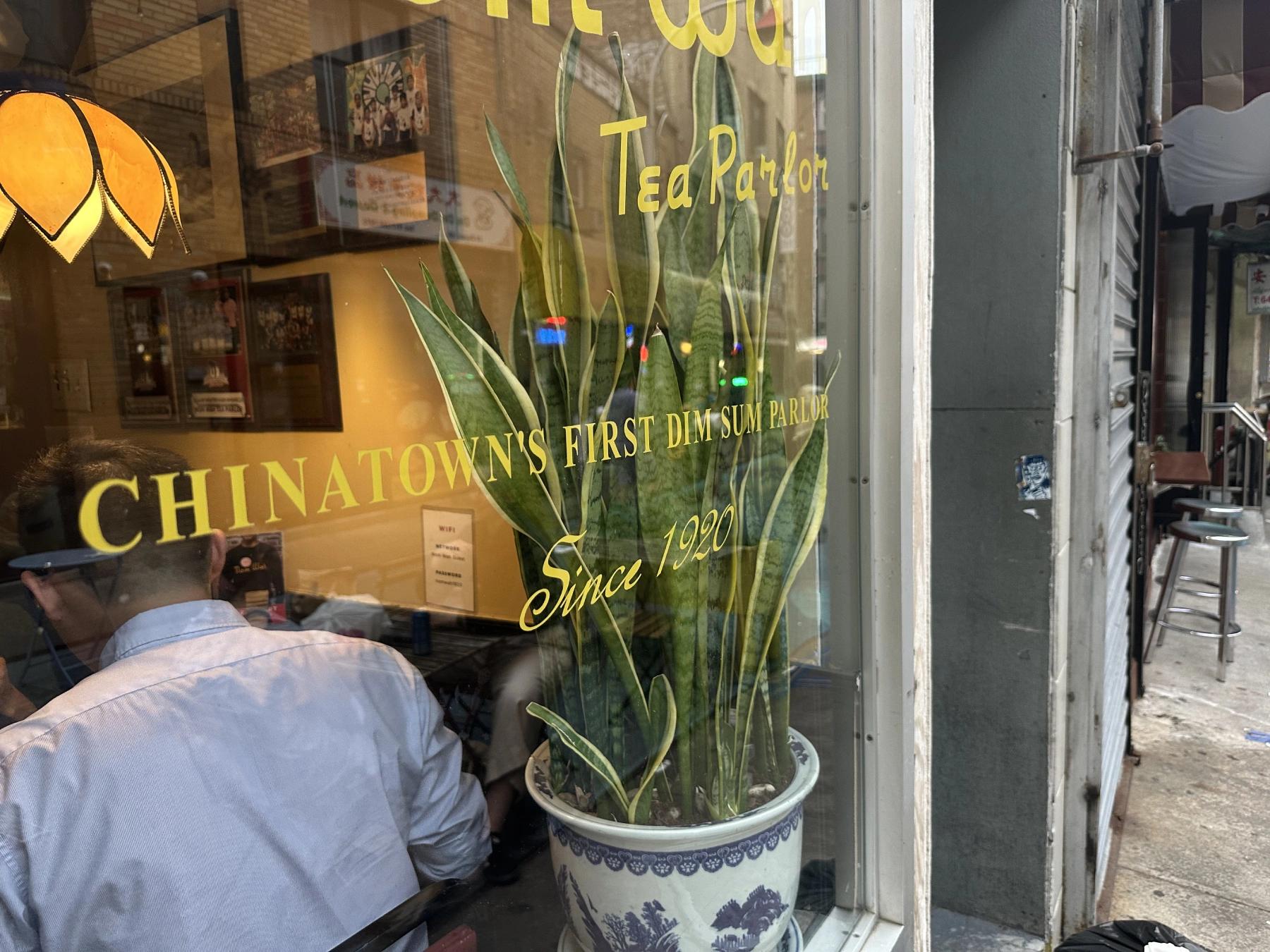
Unlike traditional dim sum houses with roving carts, Nom Wah takes an à la carte approach, allowing diners to order exactly what they want fresh from the kitchen. This makes the experience both efficient and approachable for first-timers, while still satisfying the cravings of dim sum purists.
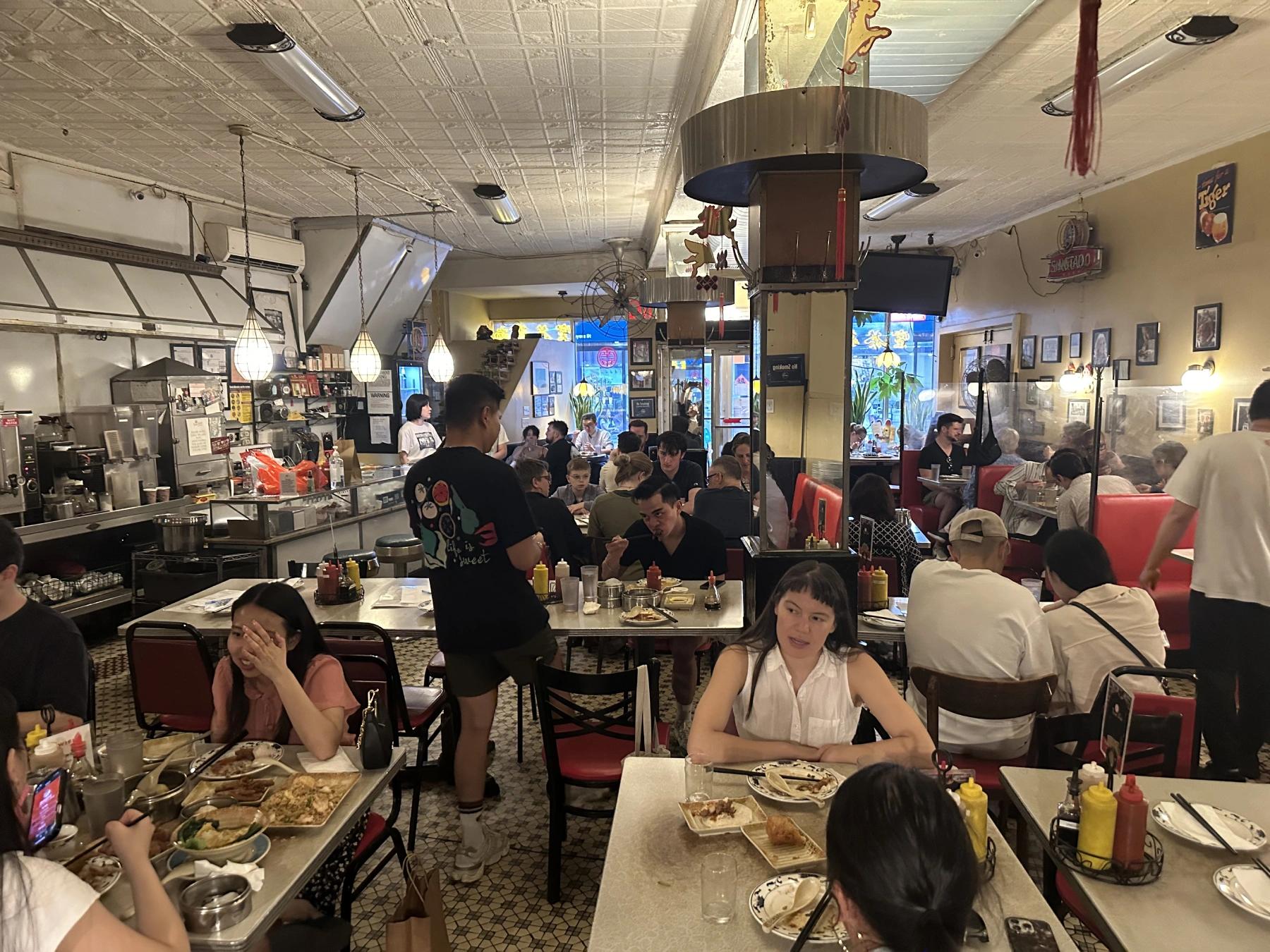
Atmosphere: Nostalgia Meets Chinatown Charm
Walking into Nom Wah Tea Parlor feels like stepping into a living museum of New York’s culinary past. The space blends old-school charm with a cozy, unfussy vibe. Red vinyl booths, checkered floors, and vintage photos on the walls transport you to another era, while the buzz of hungry diners keeps the energy vibrant and alive. It’s the kind of place where conversations linger, families gather, and solo eaters feel just as welcome. Whether you’re inside soaking in the retro ambiance or outside enjoying your takeout on a side table along Doyers Street, the experience feels authentically New York—historic, humble, and full of heart.
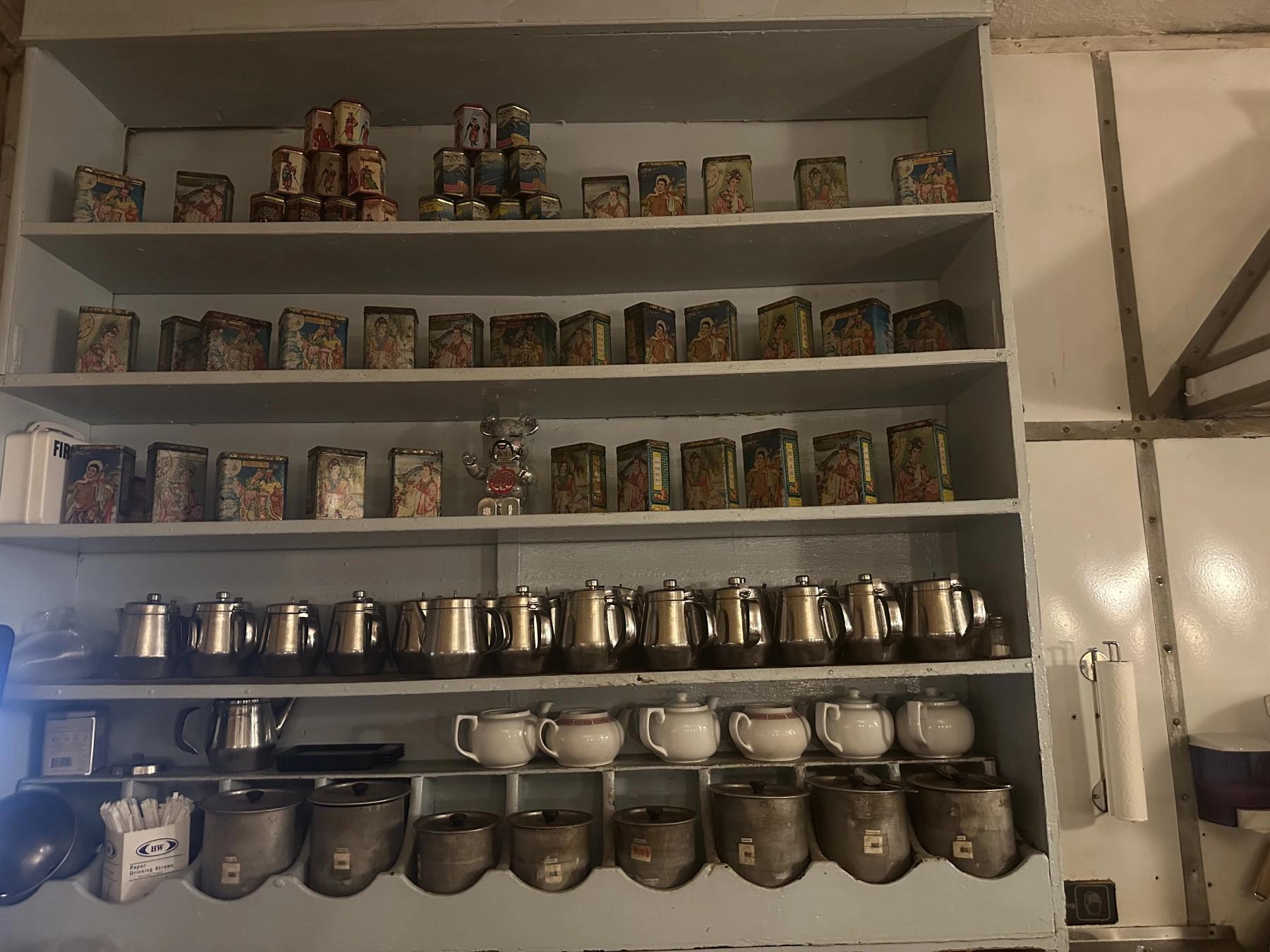
Menus
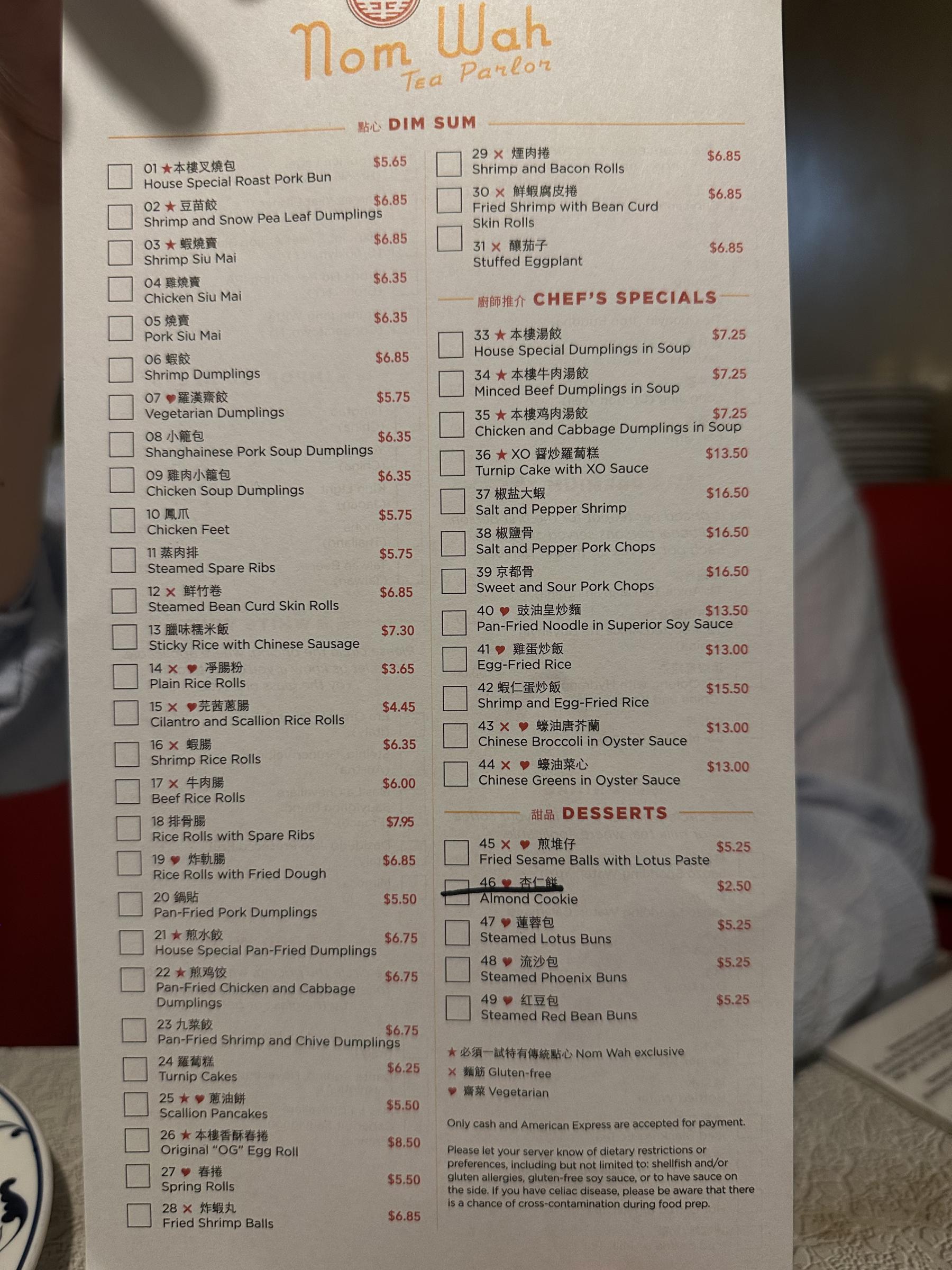

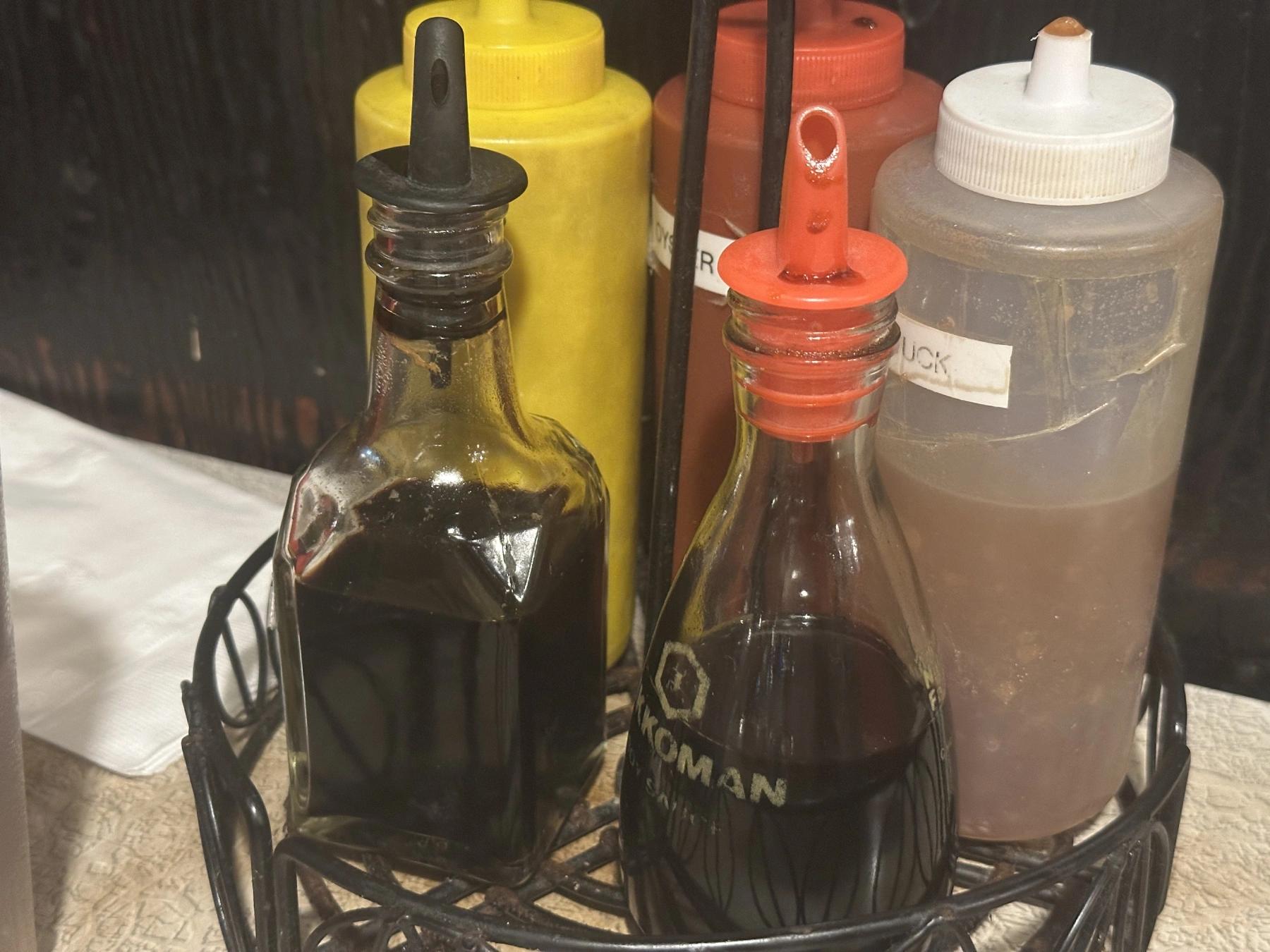
What We Ate: Classic Bites Done Right
We kept it simple and went with the all-stars—and Nom Wah delivered:
- Shrimp Dumplings (Har Gow): Plump and juicy, wrapped in delicate, translucent skin.
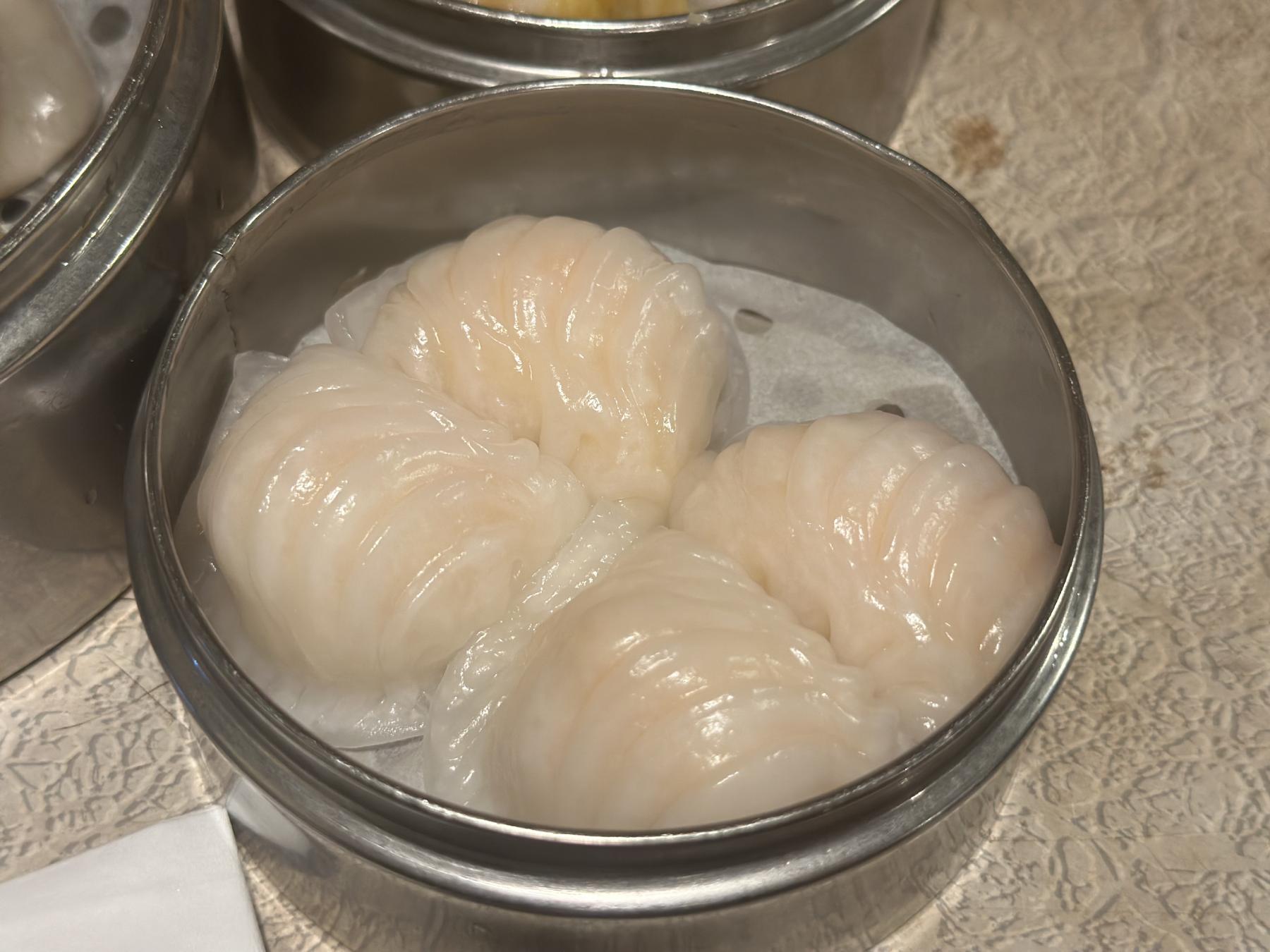
- Shrimp Shumai: A crowd-pleaser. These open-faced dumplings were savory with a hint of sweetness from the shrimp.

- Pork Soup Dumplings (Xiao Long Bao): Bursting with broth and flavor, though you’ll need to be careful not to burn your mouth on the first bite.
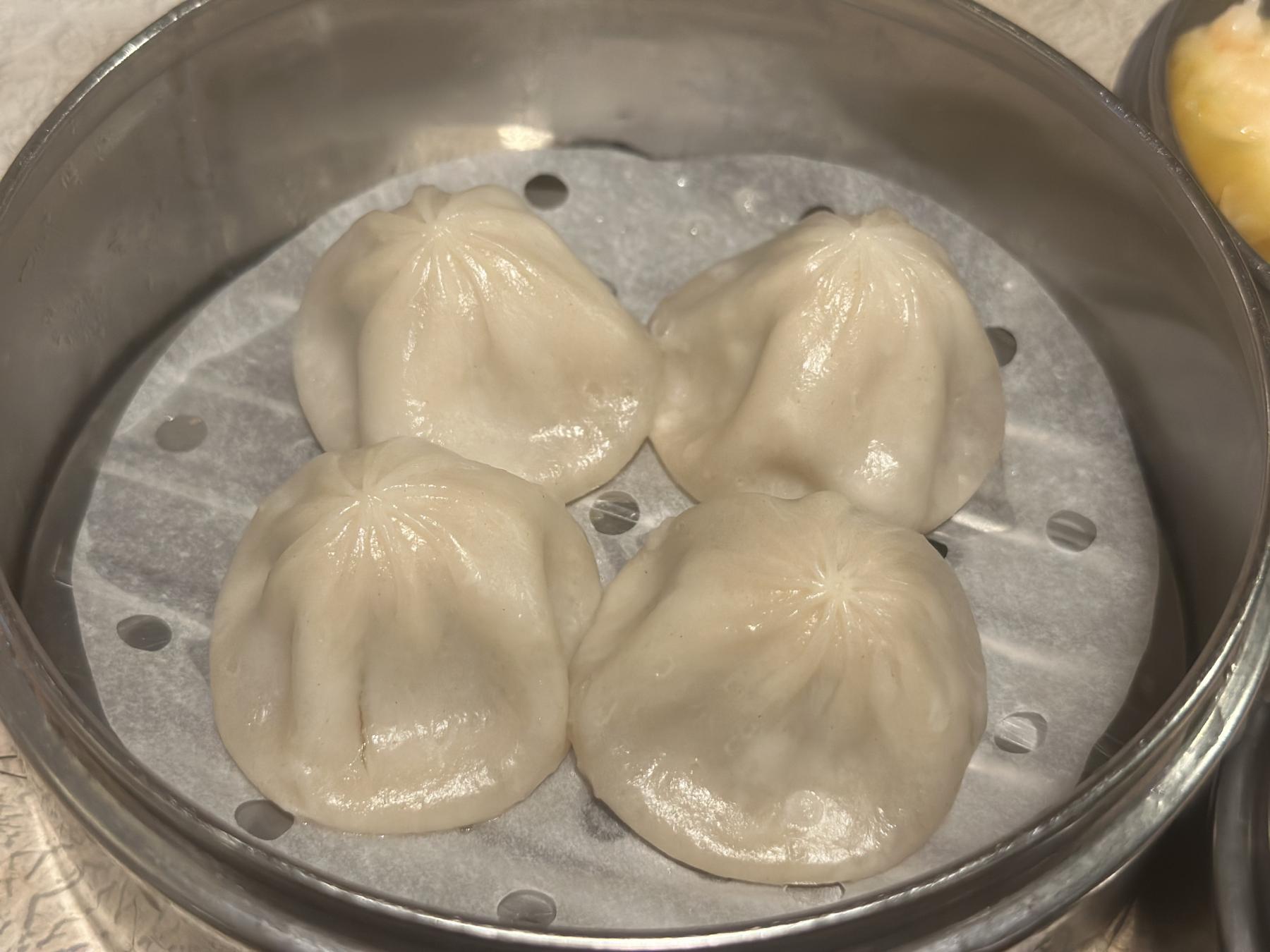

- Shrimp Rice Rolls (Cheung Fun): Silky sheets of rice noodle wrapped around fresh shrimp and drizzled in a light soy sauce. This was our favorite pick!
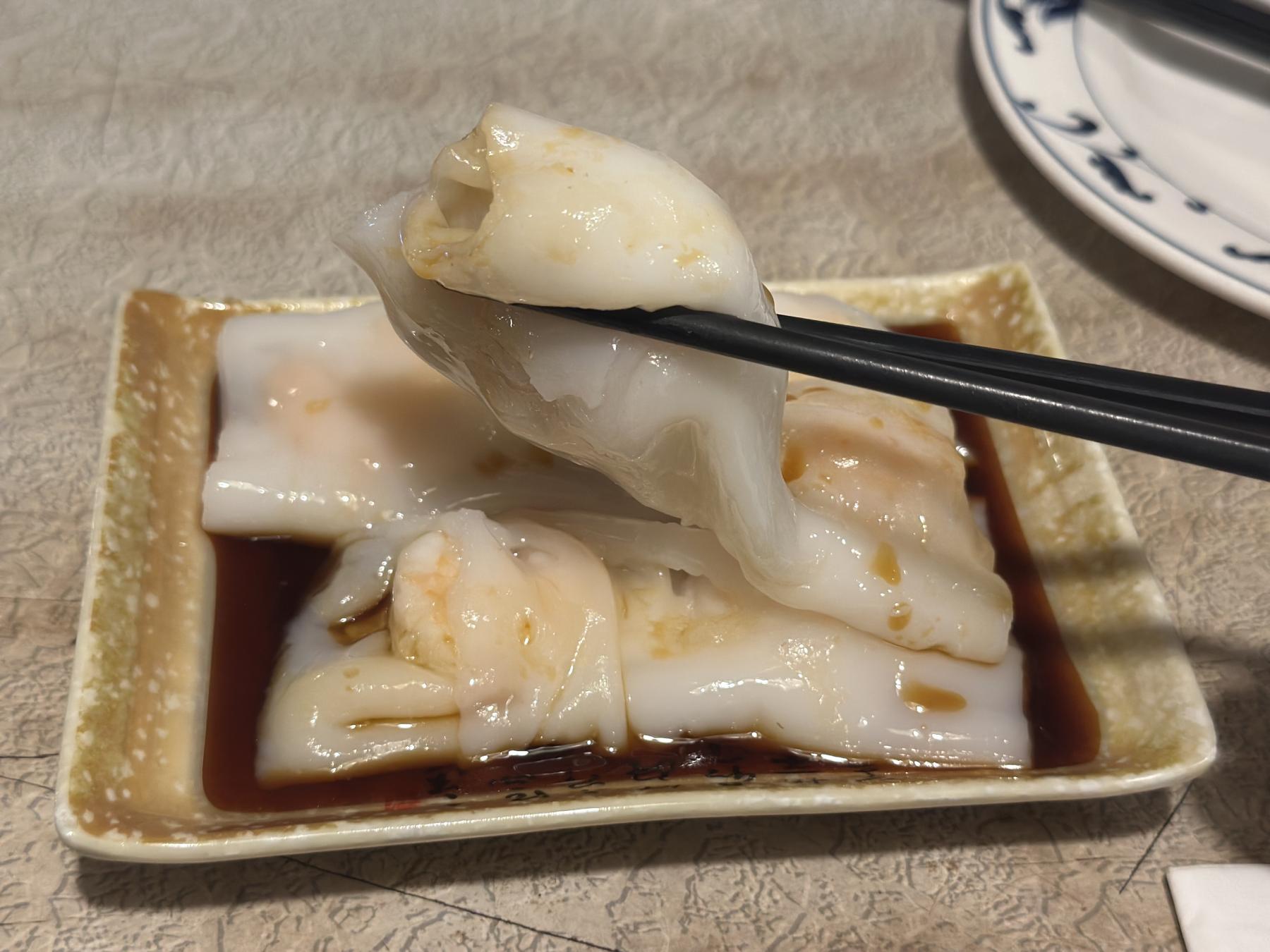
- Shrimp Fried Rice: A solid staple, perfectly seasoned with bits of egg, shrim and vegetables. I think their fried rice is one of the best among the many other Chinese food restaurants I have visited before.

We also tried the Taiwanese Lager Beer which we never tried before. It was very light and crispy, which paired well with our dishes!

Each dish carried that unmistakable homemade flavor—comforting, rich, and not overly greasy.
What You Should Know Before You Go
Dining at Nom Wah comes with a few quirks you should prepare for:
- Payment Methods: They accept cash and American Express only. No Visa, no Mastercard. So come prepared or make a quick ATM stop nearby.

-
Nom Wah Tea Parlor is open seven days a week, making it a reliable go-to whether you’re planning a casual weekday lunch or a weekend Chinatown adventure. Their hours are:
- Monday to Friday: 11:00 AM – 9:00 PM
- Saturday and Sunday: 10:30 AM – 9:00 PM
-
Wait Times: It’s popular—very popular. Expect long waits, especially on weekends. But here’s a pro tip: if you don’t mind missing table service, place a to-go order and snag one of the outdoor seats just outside. They don’t serve tables outdoors, so it’s first-come, first-sit. You might just skip the line altogether and still enjoy a hot meal with a view.
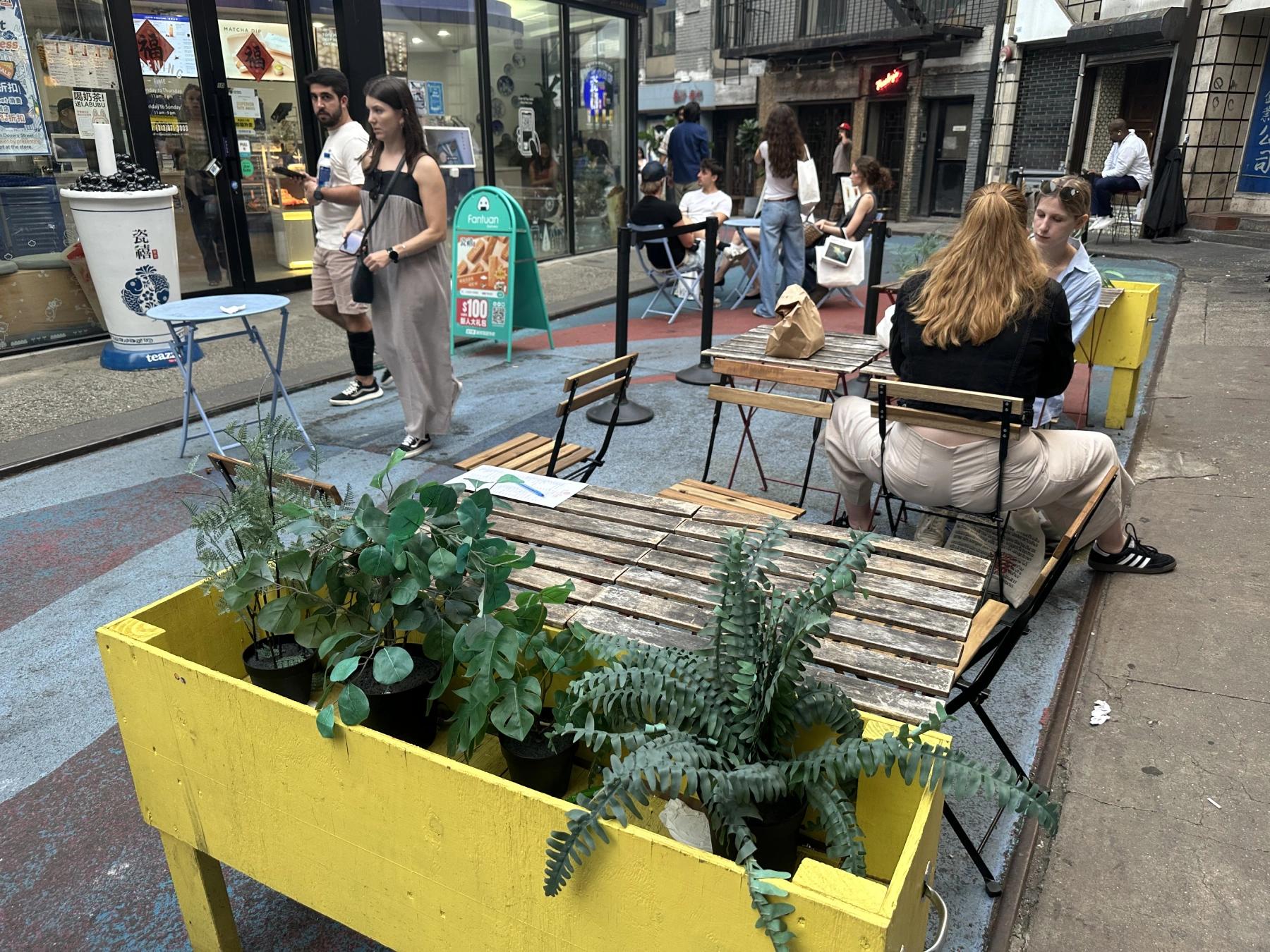
After Dim Sum: Chinatown Gems to Explore
The fun doesn’t stop after you wipe your plate clean. Chinatown is a treasure trove of hidden gems, and one of them is just a few doors down from Nom Wah.

Tapas and Wine at LEI
Right next to the dim sum spot is a cozy wine and tapas bar called LEI. It offers an intimate ambiance that contrasts beautifully with the bustle of Doyers Street. Think warm lighting, curated wines, and small plates perfect for winding down or continuing your foodie journey. It’s ideal for a post-dim sum glass of red, or maybe a late-night date spot.
Other Must-Visits in the Area
If you’re still hungry or simply want to explore:
- Apothéke – A speakeasy-style cocktail bar tucked into an unmarked doorway just around the corner. Their mixologists take inspiration from herbal remedies, making it a unique nightcap spot.
- Chinatown Ice Cream Factory – Famous for its exotic flavors like black sesame and lychee, this family-run institution is a perfect sweet ending.
- Columbus Park – Just a few minutes away, this public space is where locals gather to play mahjong, practice tai chi, or chat over tea. It’s a slice of real Chinatown life.
Why Nom Wah Is More Than Just Dim Sum
Nom Wah isn’t just about food—it’s about legacy. It’s one of the rare places in Manhattan where you can taste dishes that have been refined and passed down for generations, served in a setting that still feels grounded in history. There’s something special about biting into a shrimp dumpling while sitting on a bench outside, surrounded by murals, Chinese signage, and a chorus of different languages echoing through the alley.
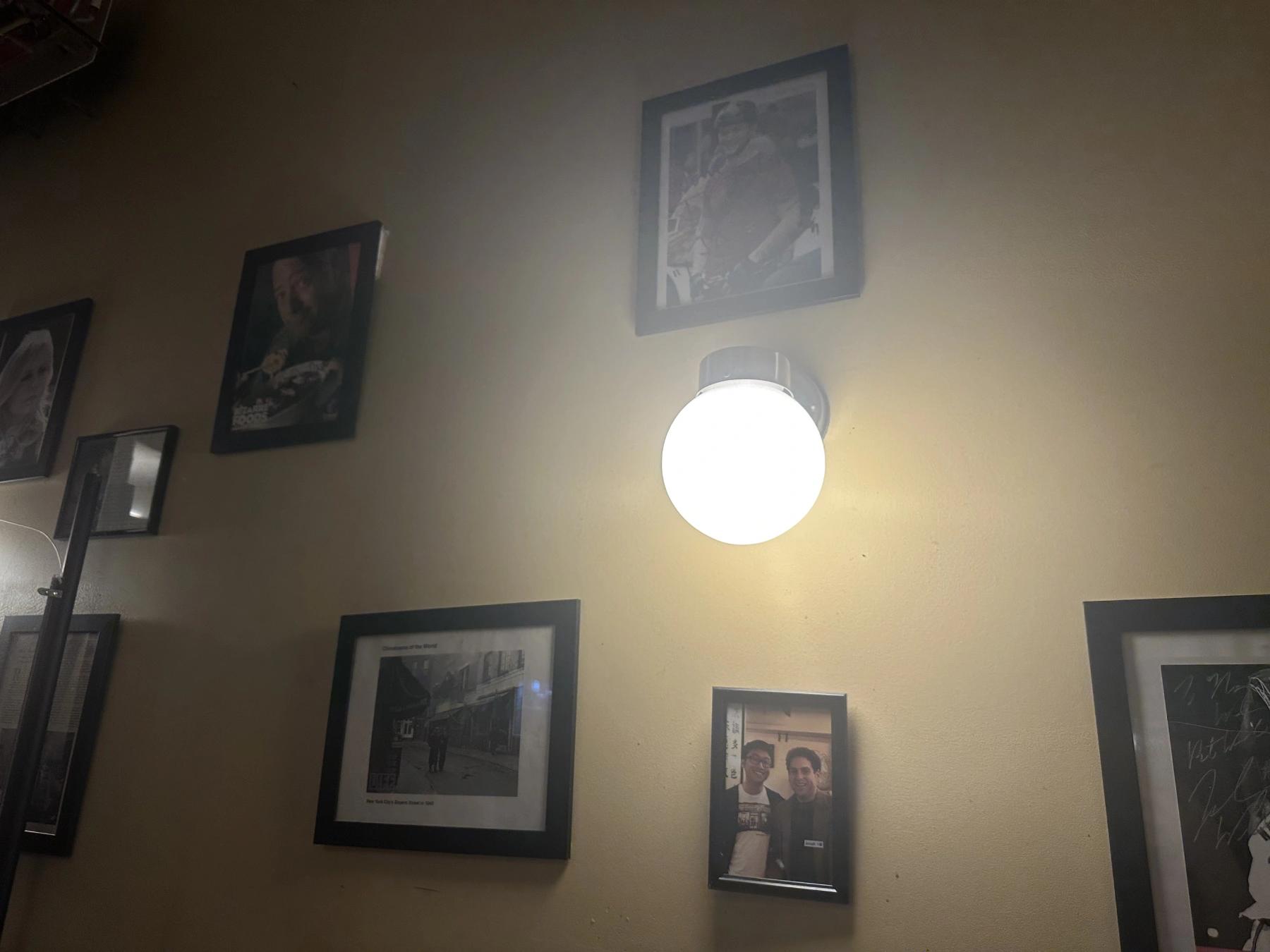
It’s a timeless experience, one that offers nostalgia for older generations and discovery for the younger ones.
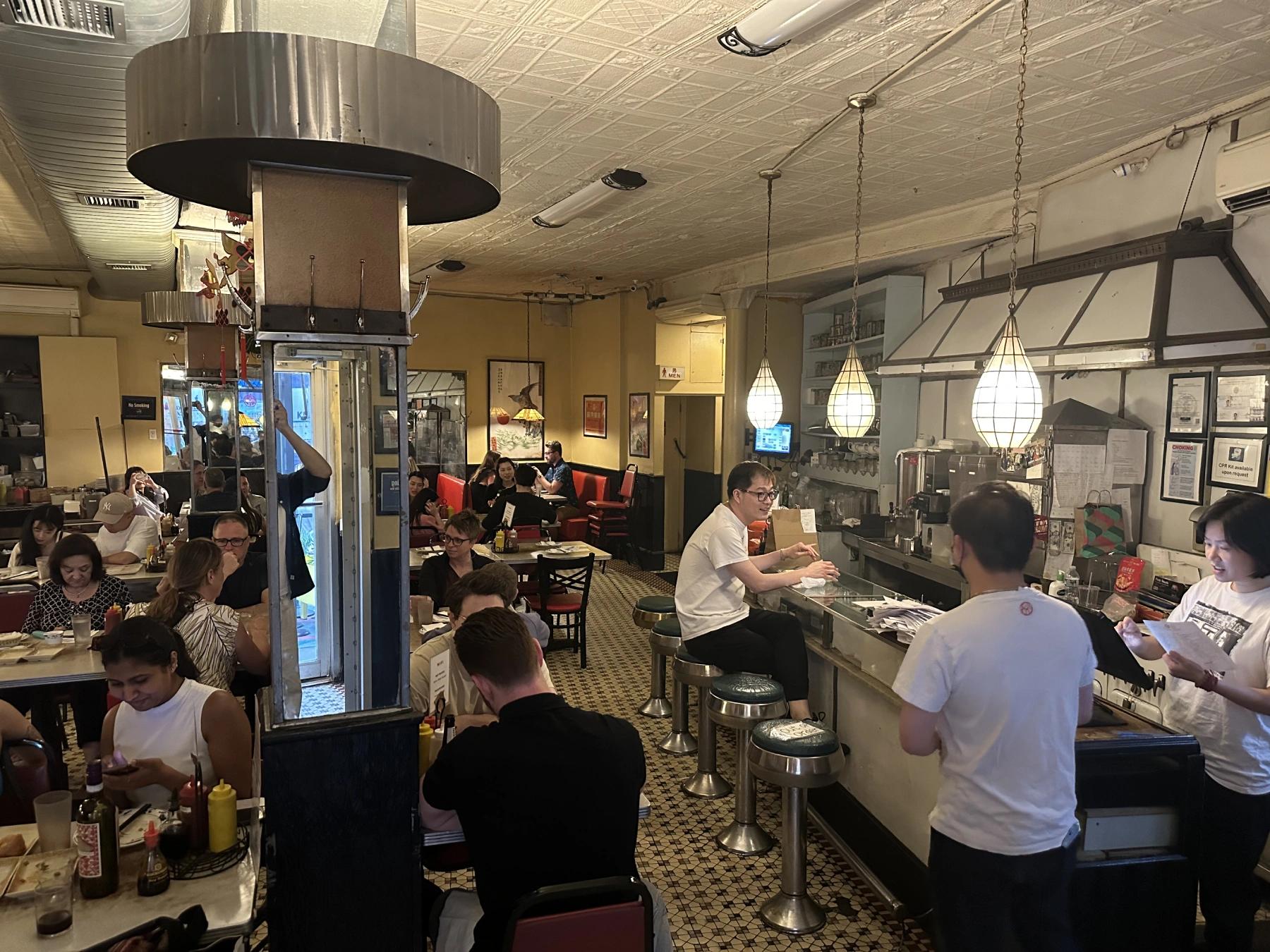
Final Thoughts
Whether you’re a dim sum connoisseur or a curious newcomer to Chinese cuisine, Nom Wah Tea Parlor is an unmissable stop on any NYC food tour. Between its legendary status, no-frills charm, and still-delicious offerings, it captures what Chinatown is all about—resilience, warmth, and a rich culinary identity that refuses to fade.

Just don’t forget: bring cash, expect a line, and let the dumplings do the talking.
Leave a comment
Comments
No comments yet.